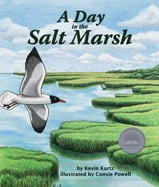Alignment to Standards for LA

| Grade | Number | Standard |
|---|---|---|
| 1 | ESS-1.36 | Locate and compare the relative proportions of land and water found on Earth |
| 1 | G-1.6 | Identify Earthês various physical features (e.g., oceans, islands, mountains, rivers) |
| 1 | LS-1.26 | Describe the differences between plants and animals |
| 1 | LS-1.32 | Describe features of some animals that benefit them in their environments |
| 2 | ESS-2.37 | Compare bodies of water found on Earth (e.g., oceans, seas, lakes, rivers, glaciers) |
| 2 | ESS-2.38 | Explain why most of the water on Earth cannot be used as drinking (potable) water |
| 2 | G-2.11 | Describe how climate affects the vegetation in the community |
| 2 | G-2.4 | Identify geographical features in the local region |
| 2 | G-2.8 | Identify examples of various landforms (e.g., continents, islands) |
| 2 | LS-2.34 | Describe inherited characteristics of living things |
| 2 | LS-2.35 | Identify the components of a variety of habitats and describe how organisms in those habitats depend on each other |
| 2 | SE-2.45 | Locate and identify plants and animals within an ecosystem |
| 2 | SE-2.50 | Describe ways in which habitat loss or change can occur as a result of natural events or human impact |
| 3 | G-3.9 | Describe and compare the physical characteristics of various regions of Louisiana |
| 3 | LS-3.35 | Compare structures (parts of the body) in a variety of animals (e.g., fish, mammals, reptiles, amphibians, birds, insects) |
| 3 | LS-3.38 | Classify groups of organisms based on common characteristics |
| 3 | LS-3.39 | Compare organisms from different groups (e.g., birds with mammals, terrestrial plants with aquatic plants) |
| 3 | SE-3.57 | Describe the interrelationships of living (biotic) and nonliving (abiotic) components within various ecosystems (e.g., terrarium, swamp, backyard) |
| 3 | SE-3.58 | Describe how humans have had negative and positive effects on organisms and their environments |
| 4 | G-4.6 | Describe and compare the distinguishing characteristics of various land forms, bodies of water, climates, and forms of vegetation in the United States |
| 4 | LS-4.41 | Describe how parts of animalsê bodies are related to their functions and survival (e.g., wings/flying, webbed feet/swimming) |
| 4 | LS-4.52 | Describe how some plants and animals have adapted to their habitats |
| 4 | LS-4.53 | Identify the habitat in which selected organisms would most likely live and explain how specific structures help organisms to survive |
| 5 | ESS-5.36. | Identify, describe, and compare climate zones (e.g., polar, temperate, tropical) |
| 5 | LS-5.26. | Identify and describe ecosystems of local importance |
| 5 | LS-5.27. | Compare common traits of organisms within major ecosystems |
| 5 | LS-5.29. | Describe adaptations of plants and animals that enable them to thrive in local and other natural environments |
| K | ESS-K.30 | Distinguish between areas of Earth covered by land and water |
| PK | LS-PK.20 | Give examples of different kinds of plants and different kinds of animals |
| PK | LS-PK.22. | Learn about animals and plants through nonfiction literature (For Creative Minds) |